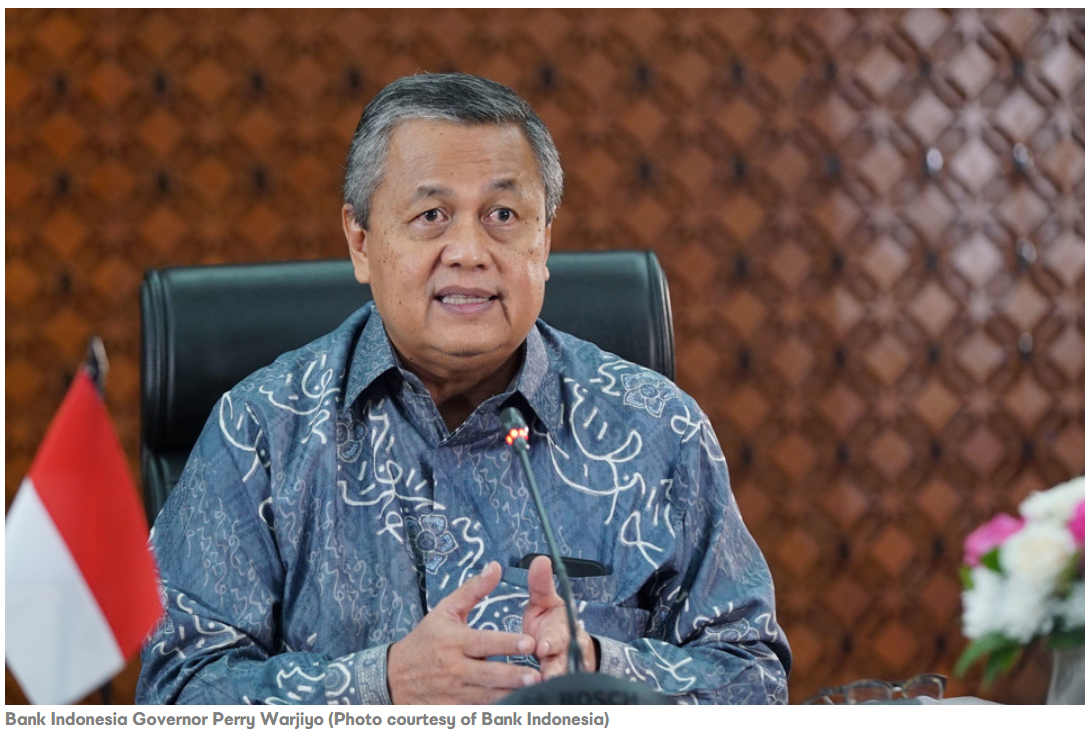Indonesia: Banks Need to Step Up as BI Runs Out Options to Spur Recovery
Jakarta. Indonesian central bank’s latest decision to keep its benchmark interest rate may indicate that it has no further room to lower its interest rate this year as higher global yields growing higher and weaker rupiah limit its options, shifting the crux to the local banks lower to their lending interest rates to support the economy.
Bank Indonesia, the country’s central bank, kept the policy rate on hold at 3.5 percent for the second straight month in line with the consensus on Tuesday.
Perry Warjiyo, the central bank’s governor, said the “the decision is consistent with the need to maintain rupiah exchange rate stability amidst persistently elevated global financial market uncertainty despite projected low inflation.”
For Joseph Incalcaterra, an economist at HSBC, and Maitreyi Das, an economics associate at HSBC, the decision was as straightforward as it can get.
“The recent rise in global bond yields — a rise that has moderated in recent weeks but by no means reversed — severely limits the central bank’s policy options,” Incalcaterra and Das wrote in a note to clients on Tuesday.
Also, they noted the rupiah has depreciated since the Bank Indonesia the last meeting. The central bank data showed the currency fell 1 percent against the US dollar since Mar 18.
The economists said Bank Indonesia has been to make a small intervention in the foreign exchange market to stabilize the currency as foreign portfolio investors pull out their funds when the proceeds from trade surpluses also decline.
“With pressure on the rupiah and subdued portfolio inflows, rate cuts are out of the question. BI is instead focusing on banks’ progress in reducing lending rates in line with previous policy rate cuts, and the central bank sounded content with the latest progress,” Incalcaterra and Das wrote.
According to Perry, state-owned lenders, which account for about 40 percent of Indonesia’s lending market, have cut their interest rates following Bank Indonesia’s five interest rate cuts in the past year.
The prime lending rate — the lending rate that lenders charge on the least risky borrowers — among Bank Mandiri, Bank Rakyat Indonesia, Bank Negara Indonesia, and Bank Tabungan Negara have fallen to 8.7 percent on average from 10 percent.
On the other hand, only a few private banks have done so. “I invite private banks and the regional development banks (BPD) to lower their basic lending rates immediately,” Perry said.
The central bank governor also said it plans to improve the lending rate transparency in the banking industry “to accelerate monetary policy transmission to bank lending rates and catalyze lending/financing to the business community.”
Indonesia’s economy needs all the support it needs from the banks to spur recovery. Bank Indonesia revised national economic growth for 2021 outlook to 4.1 to 5.1 percent range, down from its previous projection of 4.5 to 5.5 percent range.
Bank Indonesia said that consumer spending, which accounts for more than 50 percent of the economy, remains subdued amid public mobility restrictions.
Currently, only exports and government spending are driving the growth. As the pace of recovery in developed economies like the United States picks up, the government would also have a harder time attracting buyers to its bonds to finance the government stimulus programs. All of the government bonds issuances have been below target in nearly all auctions since mid-February.
HSBC’s Incalcaterra and Das suggested Bank Indonesia may urge local banks to channel liquidity into the government bond market, using the Macroprudential Liquidity Buffer instrument.
“After all, the banking sector is sitting on a record pool of excess liquidity, a result of the collapse in loan growth. BI may seek to encourage some of those funds to be channeled into the government bond market to facilitate fiscal policy further,” Incalcaterra and Das wrote.
Source: https://jakartaglobe.id/business/banks-need-to-step-up-as-bi-runs-out-options-to-spur-recovery


 Thailand
Thailand




